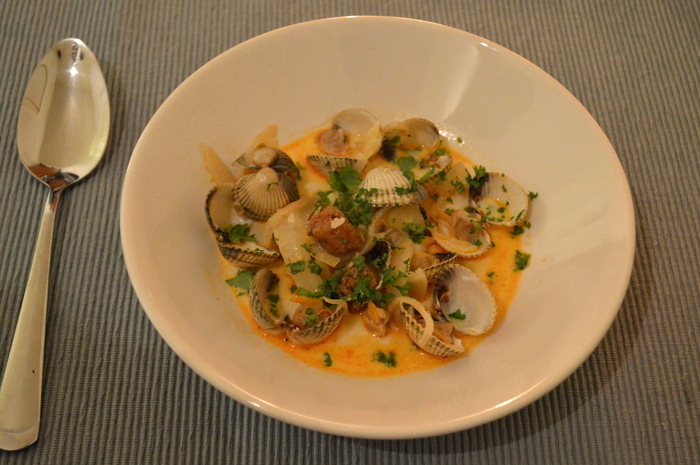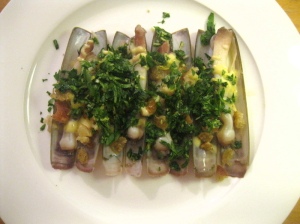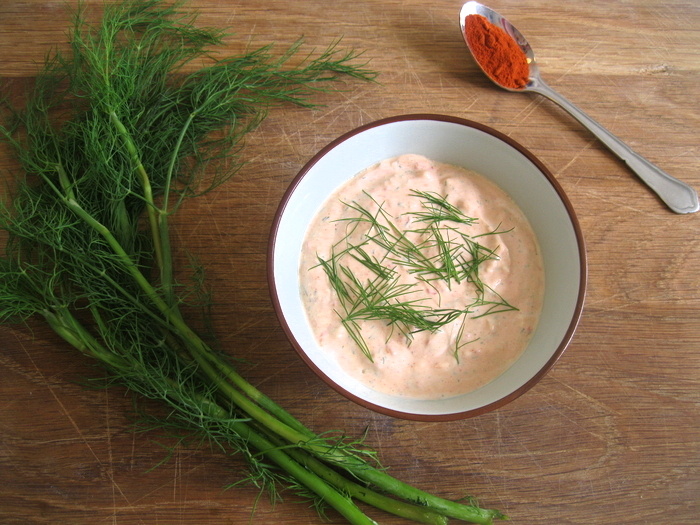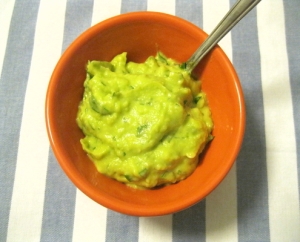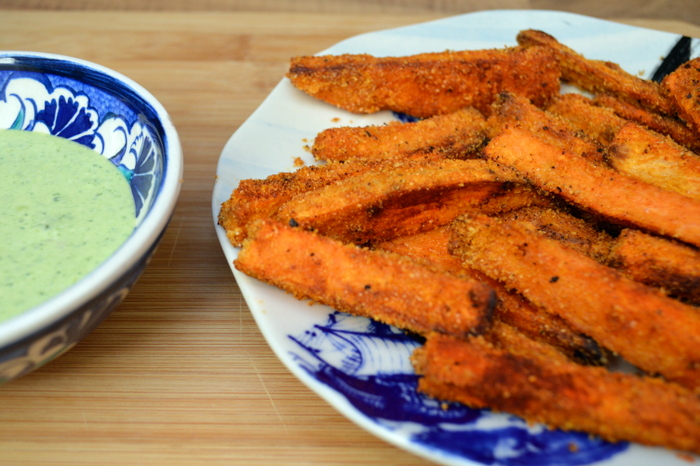
This recipe is inspired by two Dublin sister restaurants, JoBurger and Crackbird. JoBurger was the first place I ever tried sweet potato fries, and I’m pretty sure the first place that sold them in Dublin, back in the dark days at the end of the Celtic Tiger. It was a pioneer of the casual gourmet fast food scene. It was and is a place where the menu told you they had put a lot of care and attention into it, but it was served in a setting where the music, decor and nonchalant staff feel more at home in a club. A lot of places offer this now, but JoBurger to me remains the best for a very simple reason: they know their food (with a hat-tip to Bunsen, another Dublin burger place that keeps their food game on point).Dublin is rife with gourmet fast food places passing off frozen oven chips, supermarket burger buns and pulled pork slathered in hot sauce to disguise the lack of flavour who looked at the business model, but forgot to factor in the food knowledge.
This recipe recreates the sweet potato fries from JoBurger with the whipped feta dip from Crackbird. The sweet potato fries are a little different, coated in polenta to keep the outside crispy, and smoked paprika and chilli to add a bit of heat. Feel free to add more paprika, I use even more than this when I’m making these for myself, but not everyone is as mad for it as I am. If you can’t find wild garlic, you can substitute with a finely chopped clove of garlic.
Serves 4 as a generous side
Ingredients:
- 2 x large sweet potatoes (about 1.5kg in weight)
- 4 tablespoons polenta
- 3-4 teaspoons sweet smoked paprika
- 1-2 teaspoons of chilli flakes (optional, I use mild pul biber flakes)
- Neutral oil e.g. sunflower or rapeseed
- 200g feta
- 2-3 tablespoons Greek yoghurt
- 1/2 large lemon
- Small bunch wild garlic (15-20 leaves)
- A handful of spinach leaves
- 1 teaspoon honey
Method:
- Preheat the oven to 190C.
- Peel the sweet potatoes and cut them into finger sized wedges.
- Mix the polenta and paprika together with a decent amount of salt and pepper.
- Toss the sweet potato fries in a large bowl with 1-2 tablespoons of neutral oil, then add in the polenta mix and toss well to coat the fries.
- Lay them out on foil lined baking trays so that none of the sweet potato fries touch each other (you will need to do this in batches) and roast in the oven at 190C for about 20 minutes until the fries are crispy and browned on the outside, and soft in the middle, carefully turning them halfway through so they crisp evenly.
- Meanwhile, burn the lemon half on a hot pan until blackened and completely soft on the cut side (you can also skip this step and use the lemon juice straight up).
- Crumble the feta into a bowl with the yoghurt, wild garlic and spinach and blend with a stick blender until smooth.
- Add the juice of the burnt lemon, and the honey to taste (I like things very citrusy, so I usually scape all the lemon flesh in, add it slowly until you get the taste you like).
- Serve with the warm sweet potato fries.

